In the early years of aviation, bold ideas and experimental designs shaped the future of flight. Visionary engineers and daring pilots crafted planes that pushed the boundaries of what was thought possible. They tested limits, solved engineering puzzles, and paved the way for the high-speed, agile aircraft we know today. Here’s a closer look at some groundbreaking vintage airplanes that redefined the skies.
Wright Flyer (1903)
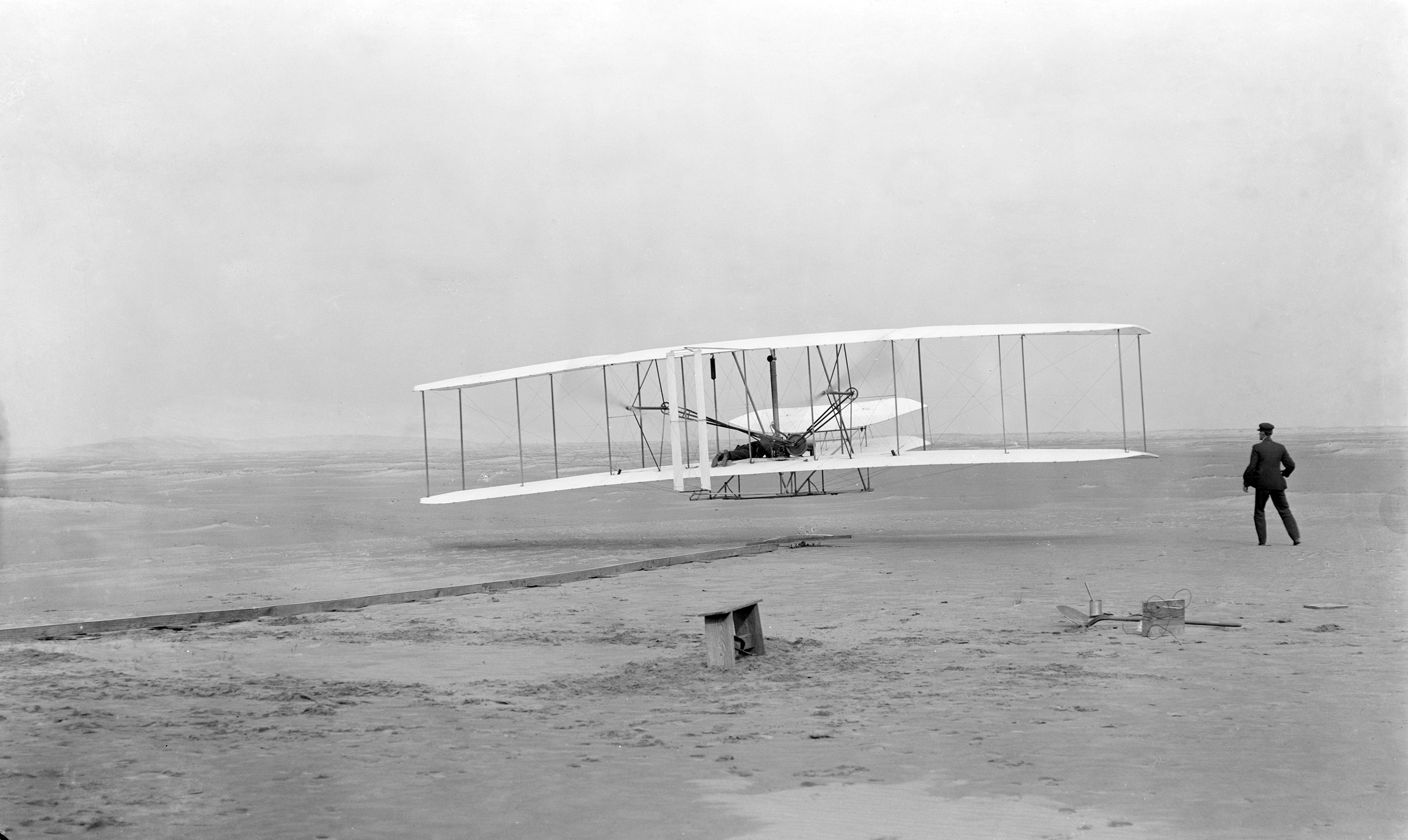
The Wright Flyer, crafted by Orville and Wilbur Wright in the United States, became the world’s first successful powered aircraft. Built in 1903, it featured a simple yet revolutionary design, with biplane wings and a lightweight structure made from wood and cloth. The Flyer used a hand-built engine and twin propellers to generate lift and thrust. On December 17, 1903, near Kitty Hawk, North Carolina, it made its historic 12-second flight, traveling 120 feet. This breakthrough paved the way for controlled, powered flight, marking a milestone in aviation history and inspiring future aerodynamics innovations.
Blériot XI (1909)
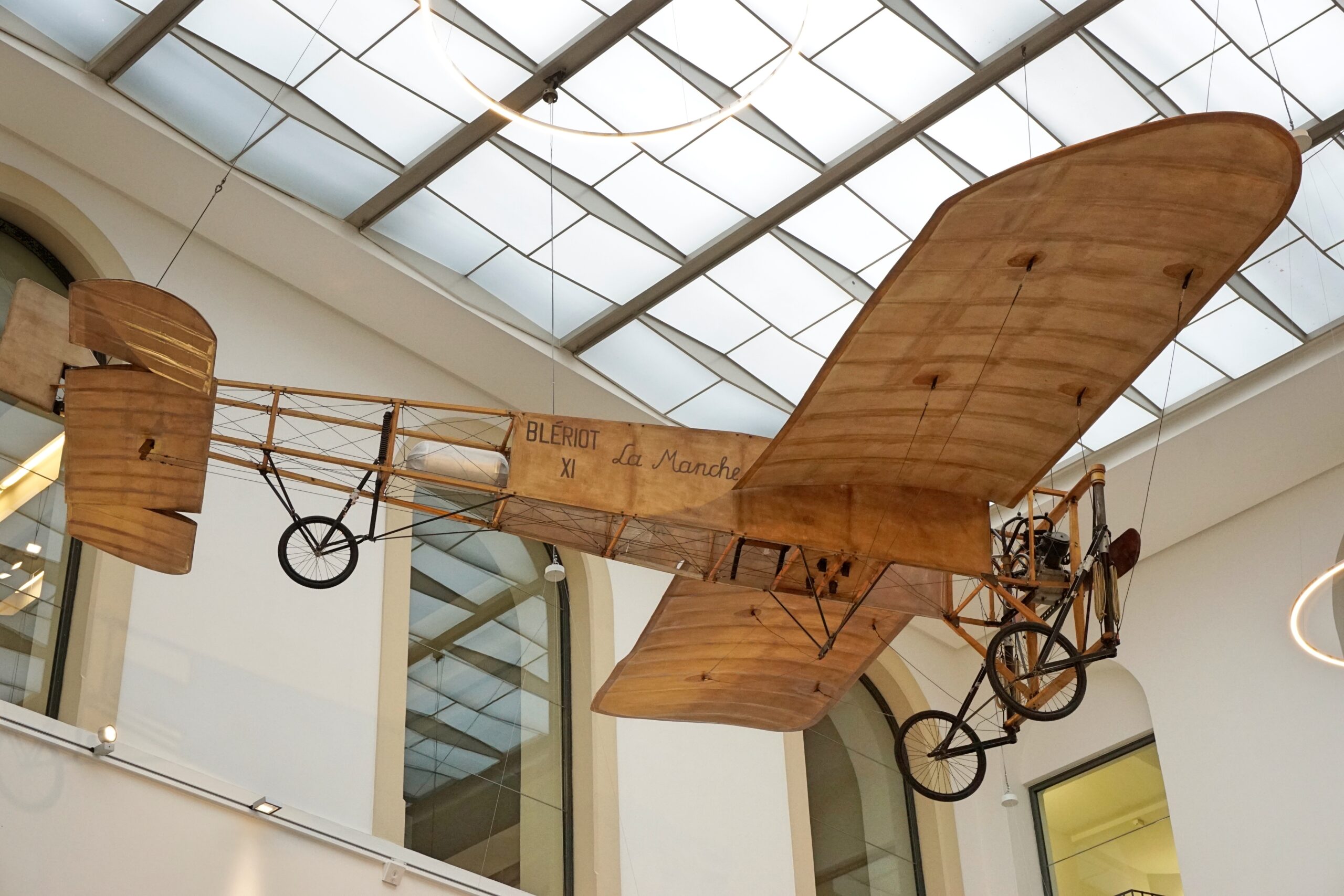
Designed by French aviator Louis Blériot, the Blériot XI took to the skies in 1909 and quickly became an iconic airplane. Blériot crafted this monoplane with a lightweight, streamlined frame and a single wing design that contrasted sharply with the biplanes of its era. On July 25, 1909, Blériot used the Blériot XI to make the first-ever flight across the English Channel, proving the aircraft’s efficiency and stability. This 37-minute journey from France to England marked a turning point in aviation and demonstrated the potential of single-wing designs for longer, controlled flights.
Sopwith Camel (1917)
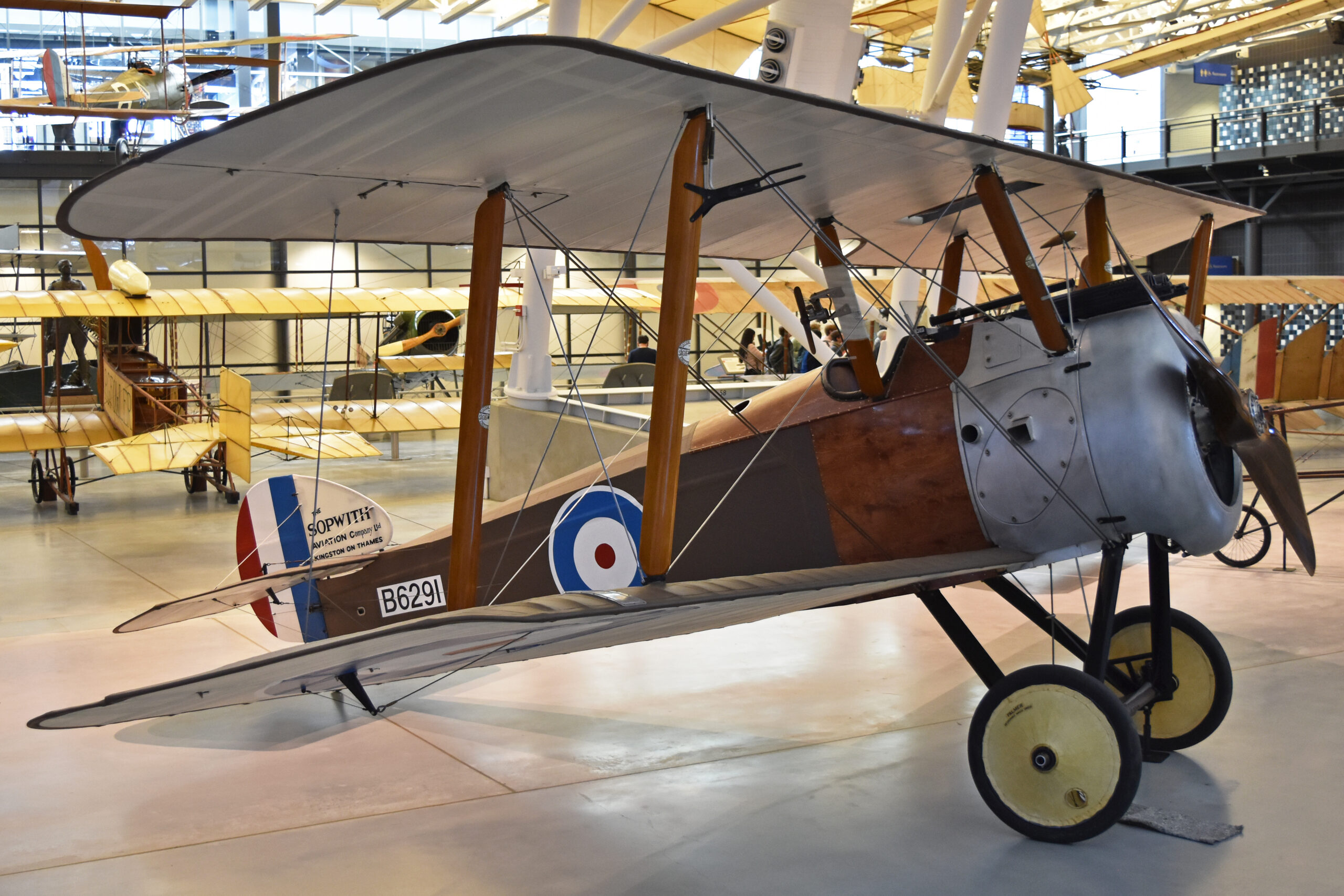
The British-built Sopwith Camel, introduced in 1917 during World War I, set new standards in combat aviation. Created by Sopwith Aviation Company, this biplane was renowned for its agility and maneuverability in dogfights. It featured a powerful rotary engine and twin synchronized machine guns, giving it an edge over enemy aircraft. With its compact and nimble design, the Camel became a favorite among Allied pilots. The plane saw action on multiple fronts, becoming one of the war’s most effective and feared fighter planes, further advancing combat aerodynamics.
Junkers J 1 (1915)
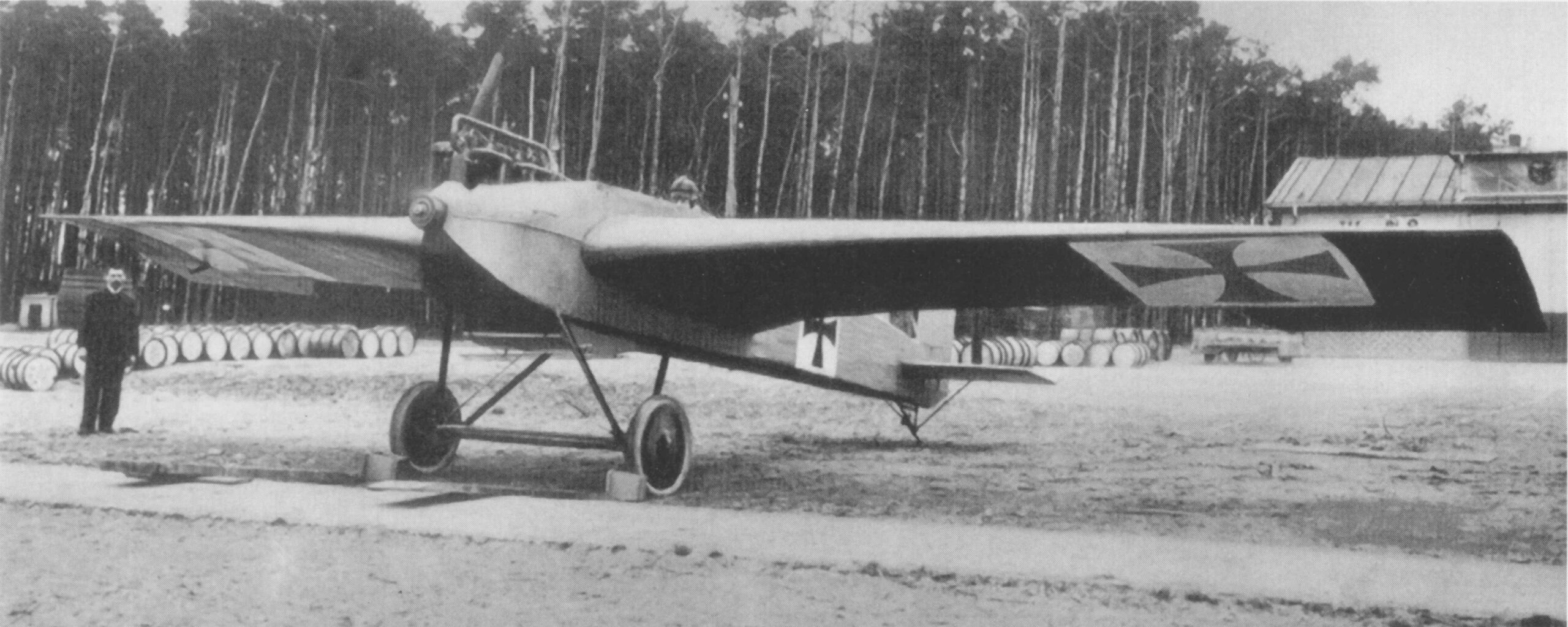
The German Junkers J 1, created by Hugo Junkers in 1915, was the world’s first all-metal aircraft. Built using lightweight, corrugated duralumin, the J 1 offered unprecedented durability and a streamlined profile for improved airflow. Unlike other planes of its time, it didn’t rely on wood or fabric, making it more resistant to damage. The J 1’s design paved the way for modern aircraft construction techniques. Although it was not used in combat, its first flight in 1915 set a new precedent for metal planes, influencing future aeronautical engineering.
Supermarine S.5 (1927)
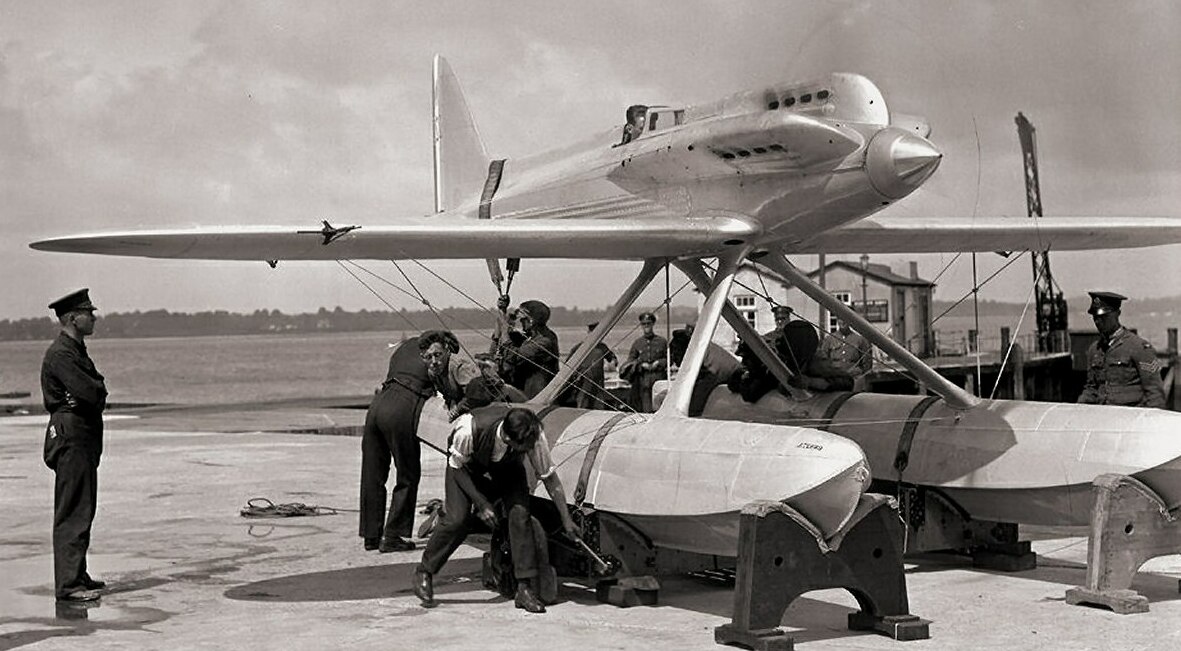
The Supermarine S.5, designed by British engineer Reginald Mitchell, emerged in 1927 as a breakthrough in high-speed racing aircraft. With its sleek, single-seat monoplane design, the S.5 was built for the Schneider Trophy races and boasted a powerful engine that allowed it to reach record-breaking speeds. On September 13, 1927, it won the Schneider Trophy, setting a new speed record and proving that aerodynamically optimized designs could significantly improve performance. The S.5’s success laid the foundation for Mitchell’s later work on the Supermarine Spitfire, one of WWII’s most famous fighters.
Hughes H-1 Racer (1935)
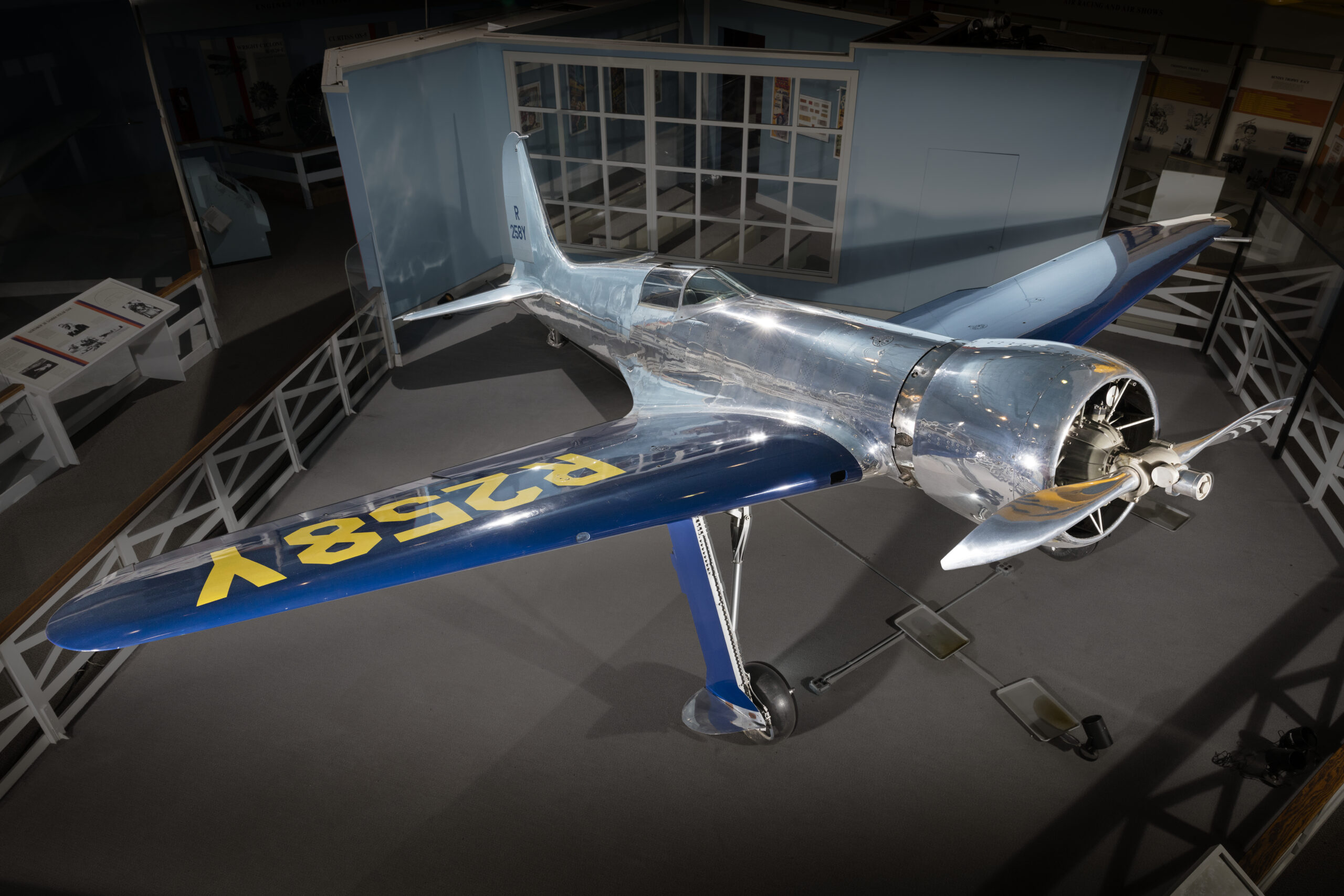
The Hughes H-1 Racer, created by American aviator Howard Hughes in 1935, was an experimental speed plane with a sleek, streamlined design. Built for setting speed records, it featured innovative retractable landing gear and highly polished metal surfaces to reduce drag. On September 13, 1935, Hughes piloted the H-1 to set a new airspeed record of 352 mph, showcasing the plane’s aerodynamic superiority. The H-1’s advanced design influenced many later high-speed aircraft, proving that every detail—from shape to surface finish—could enhance flight performance.
Northrop YB-35 (1946)

The Northrop YB-35, introduced in 1946, was a pioneering American flying wing bomber, designed by Jack Northrop. Built without a traditional fuselage, it had an unconventional, tailless design aimed at reducing drag and maximizing lift. The YB-35’s unique configuration allowed for a high payload capacity and increased fuel efficiency, making it ideal for long-range missions. Though it was never put into mass production, its first flight on June 25, 1946, marked a bold step in aerodynamics and stealth technology, influencing the development of later flying wing aircraft like the B-2 Spirit.
Messerschmitt Me 262 (1942)
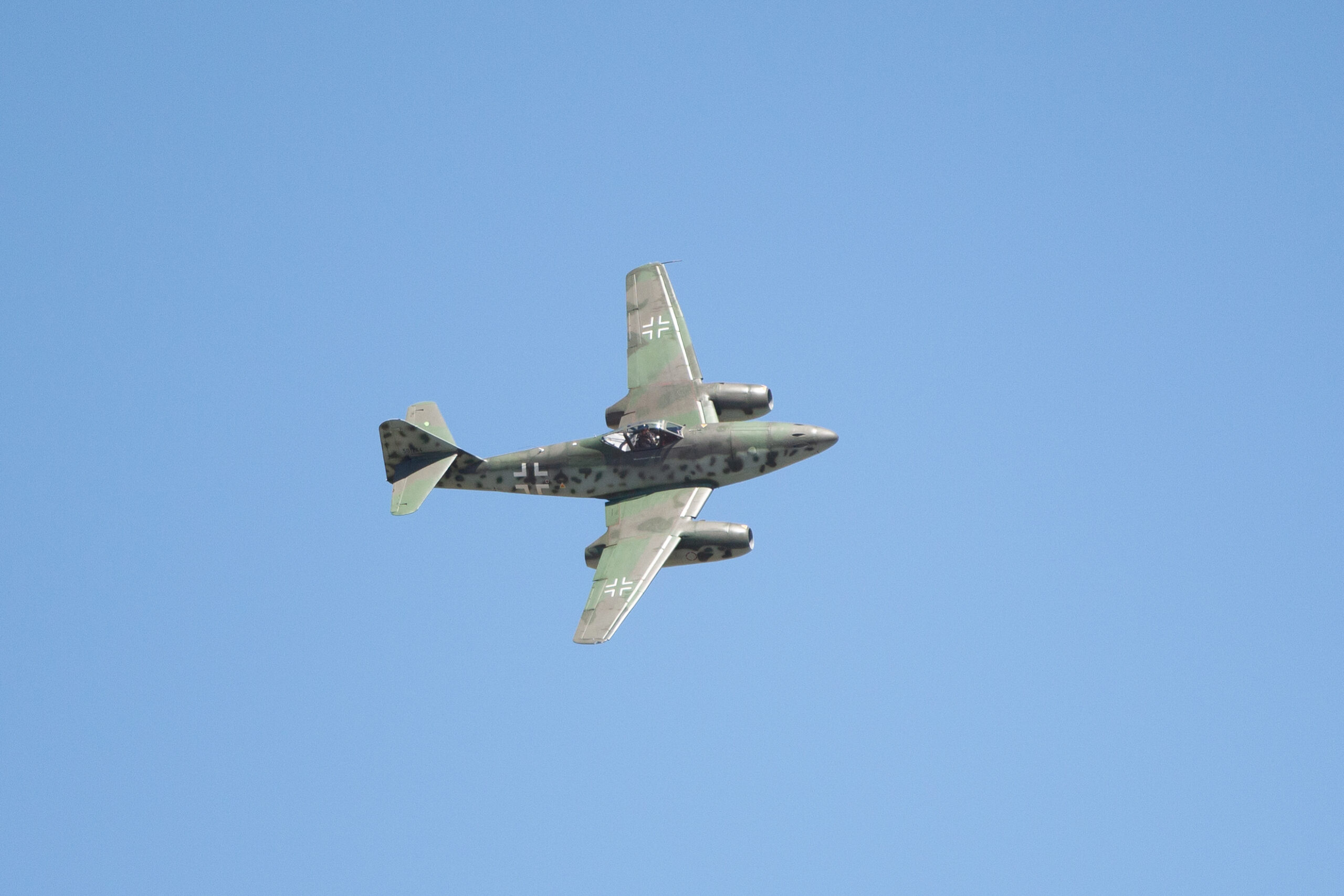
The Messerschmitt Me 262, created by Germany’s Willy Messerschmitt, was the world’s first operational jet-powered fighter aircraft. Developed in 1942, the Me 262 boasted two Junkers Jumo 004 turbojet engines, allowing it to reach speeds unmatched by propeller-driven fighters of the time. Its streamlined fuselage and swept-back wings contributed to its aerodynamic efficiency and agility. When it first flew on July 18, 1942, it marked a milestone in aerial combat. Though it saw limited combat during World War II, the Me 262 influenced post-war aircraft design and opened the door for future jet fighters.
Lockheed P-38 Lightning (1939)

The Lockheed P-38 Lightning, designed by American engineer Clarence “Kelly” Johnson, was introduced in 1939 and became one of World War II’s most unique and effective fighters. Its twin-boom design and central nacelle set it apart from other planes, giving it both stability and an iconic appearance. First flown on January 27, 1939, the P-38 reached speeds up to 400 mph and excelled in high-altitude missions due to its turbo-supercharged engines. The P-38’s combination of speed, range, and firepower made it an invaluable asset in both the European and Pacific theaters, influencing future twin-engine fighter designs.
Vought V-173 “Flying Pancake” (1942)
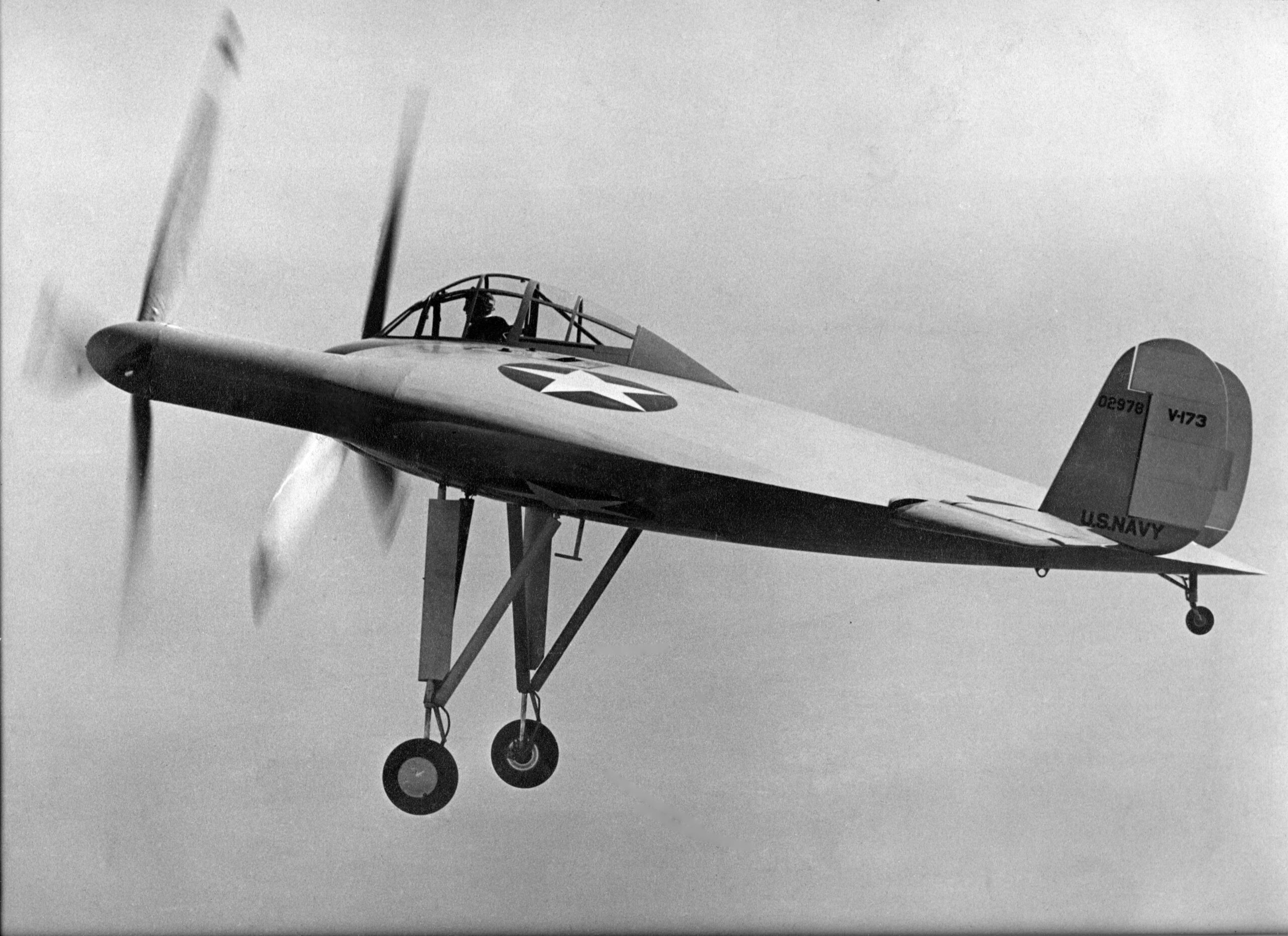
The Vought V-173, also known as the “Flying Pancake,” was an experimental aircraft designed by Charles H. Zimmerman in the United States in 1942. Its unusual round, flat body gave it a pancake-like appearance, which allowed for extremely short takeoffs and landings. Powered by two radial engines, the V-173’s design allowed it to achieve impressive lift and maneuverability despite its unconventional shape. The plane first took flight on November 23, 1942, proving Zimmerman’s theories on lift and control. Although it never entered mass production, the Flying Pancake demonstrated new possibilities in aircraft shape and performance.
North American P-51 Mustang (1940)
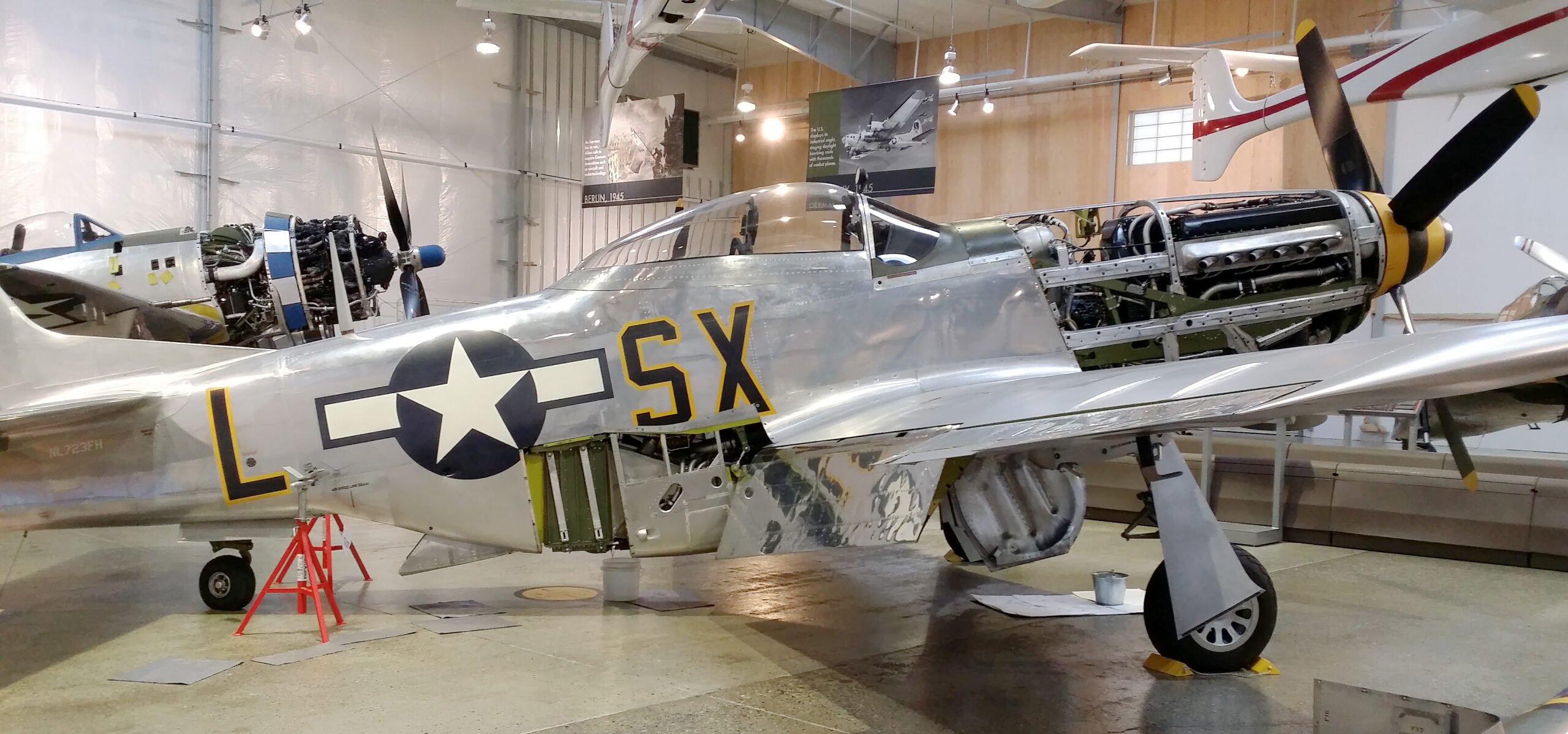
The North American P-51 Mustang, designed in 1940 by North American Aviation for the U.S. military, is widely considered one of the greatest fighter planes of World War II. Created under the direction of Edgar Schmued, it featured a streamlined fuselage, bubble canopy, and long-range capabilities. Powered by a powerful Rolls-Royce Merlin engine, the P-51 could reach speeds over 400 mph. Its first flight on October 26, 1940, marked the start of a successful career in both air-to-air combat and escort missions. The Mustang’s design and performance set a new standard for fighters and left a lasting impact on aviation.
Bell X-1 (1947)
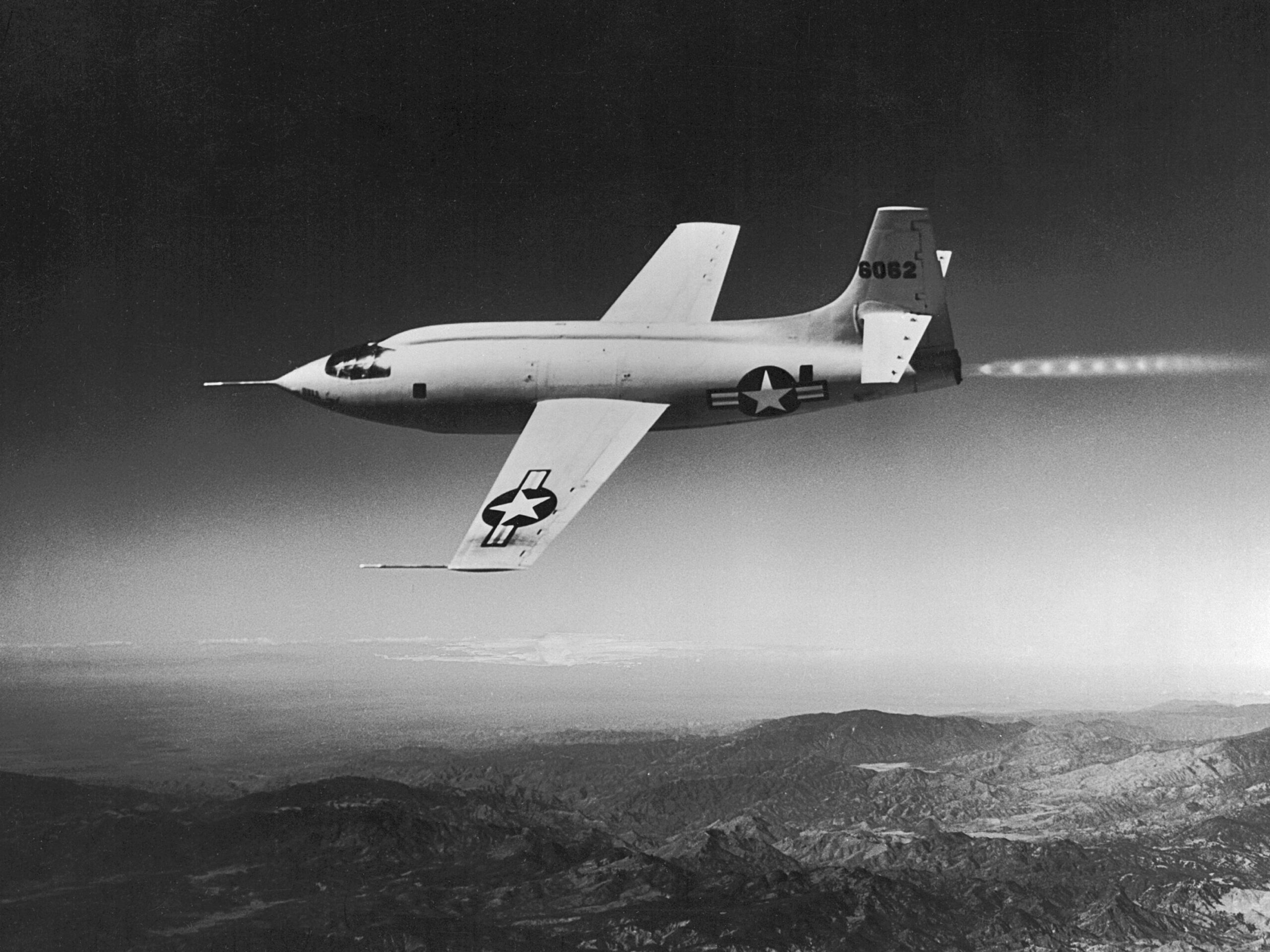
The Bell X-1, developed by Bell Aircraft in 1947, was the first aircraft to break the sound barrier. Designed by American engineer Robert J. Woods, it had a sleek, bullet-like shape and powerful rocket engine that allowed it to reach supersonic speeds. On October 14, 1947, piloted by Chuck Yeager, the X-1 soared past Mach 1, making history as the first manned aircraft to travel faster than sound. This breakthrough in supersonic flight showcased new possibilities in aerodynamics and laid the groundwork for the development of supersonic and space travel.
De Havilland DH.88 Comet (1934)
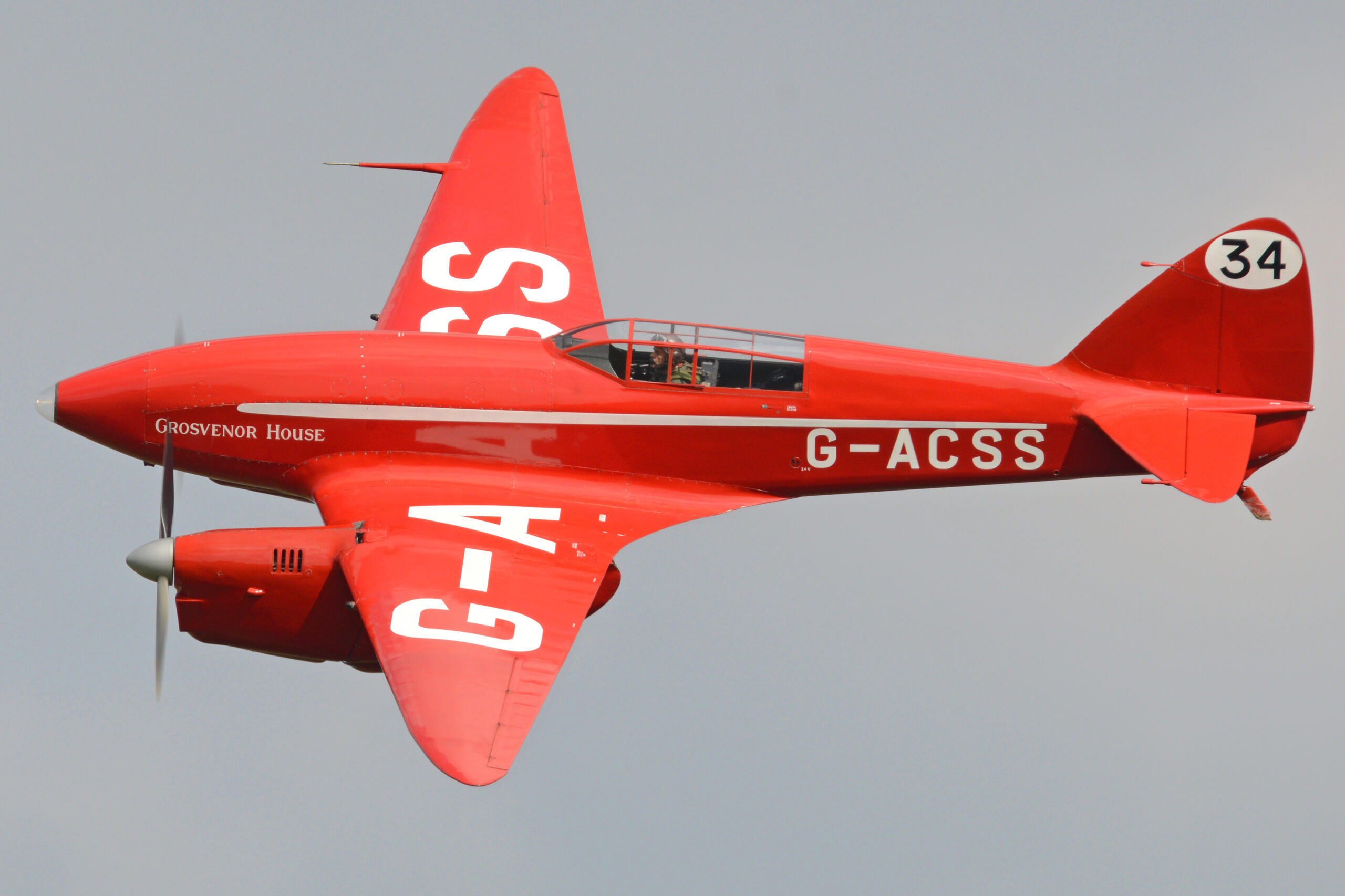
The De Havilland DH.88 Comet, crafted by British engineer Arthur Hagg in 1934, was a twin-engine racing plane built to compete in the MacRobertson Air Race. With its streamlined design and lightweight frame, the DH.88 was made for speed and endurance. It first flew on September 8, 1934, covering the 11,300-mile course from England to Australia in just under three days. Its speed and fuel efficiency made it a marvel of the era, and it influenced the design of future long-distance aircraft. The DH.88 demonstrated how innovative design could revolutionize aviation performance.
This article originally appeared on Rarest.org.
More from Rarest.org
11 Largest Waterfalls in the World

Waterfalls are some of nature’s most captivating displays, with their powerful cascades and breathtaking heights. Read More.
13 Rare Bird Species Facing Extinction Due to Habitat Loss
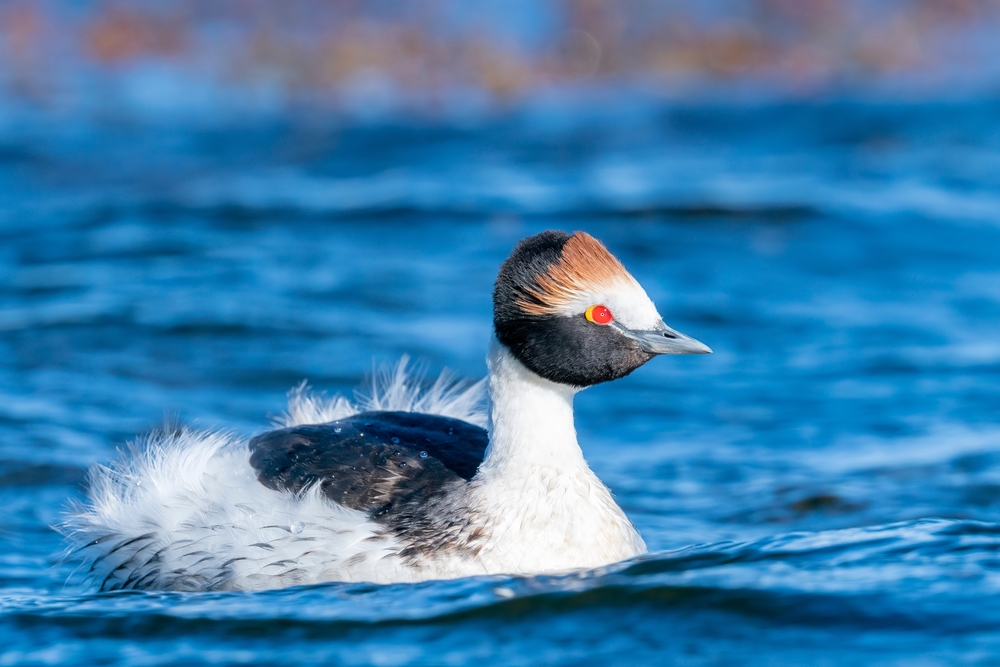
Birds across the globe are facing a significant threat of extinction, largely due to the destruction of their habitats. Read More.
10 Largest Colleges in the United States

The United States is home to some of the largest colleges in the world, both in terms of student population and campus size. Read More.
